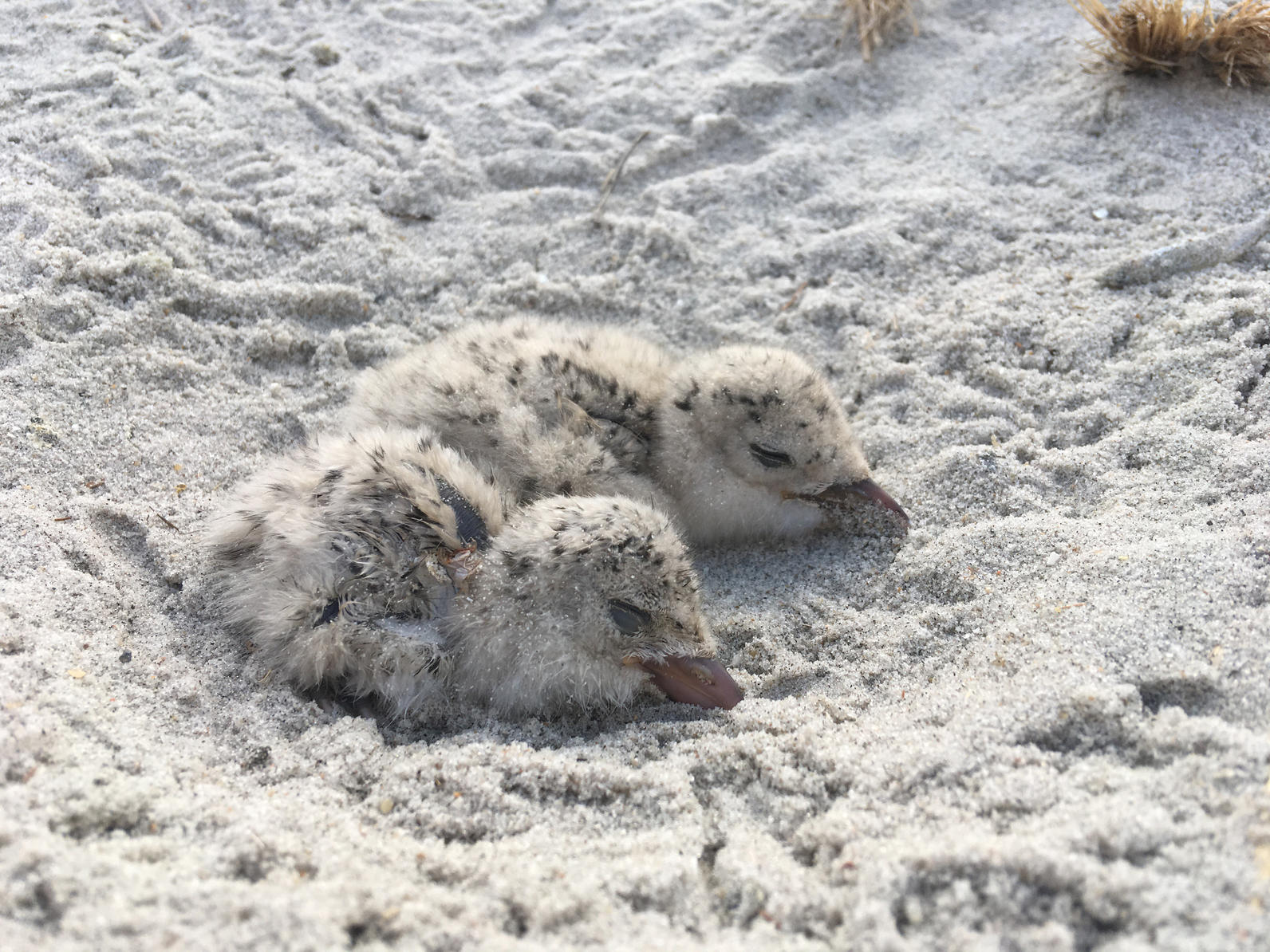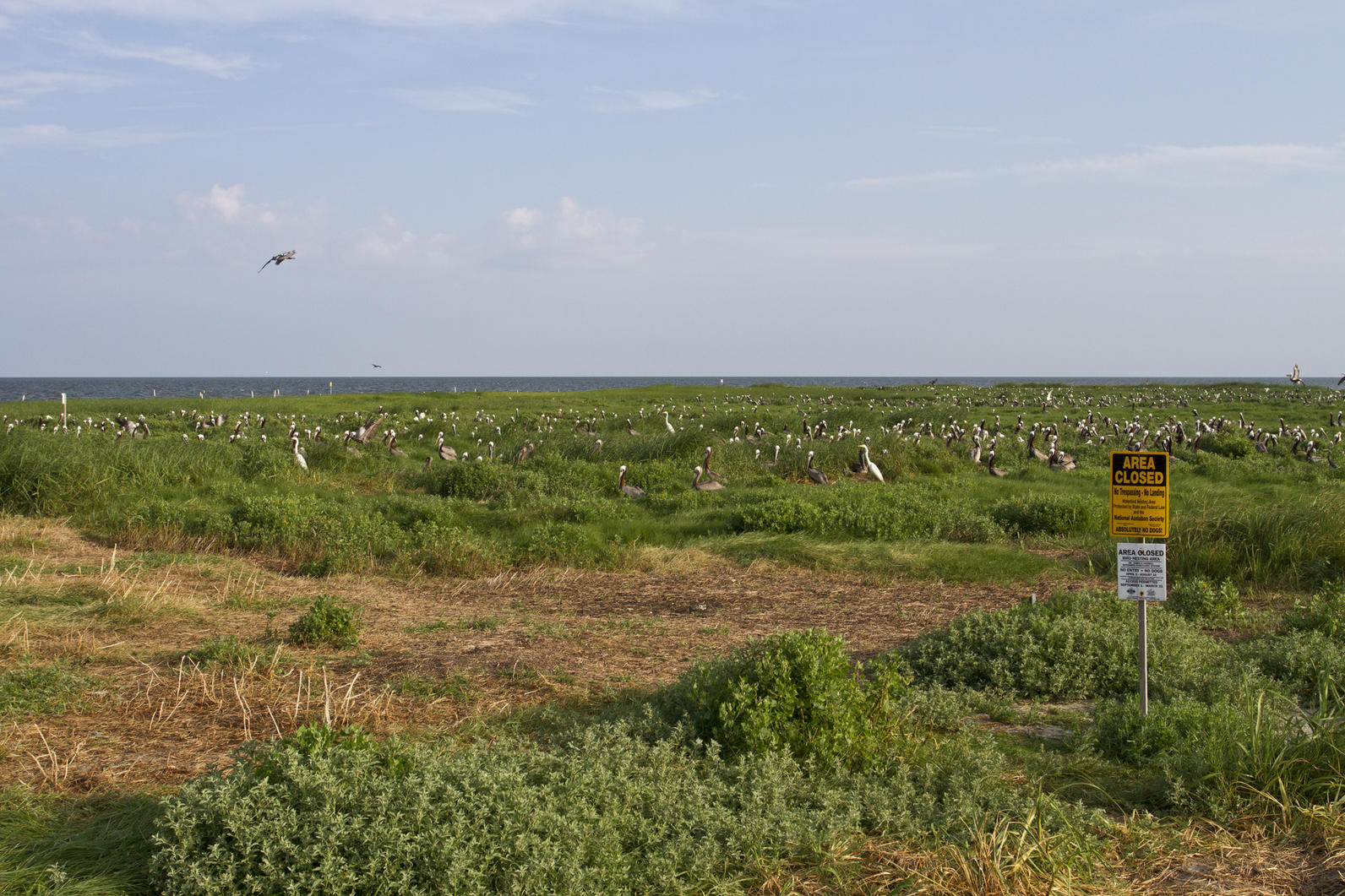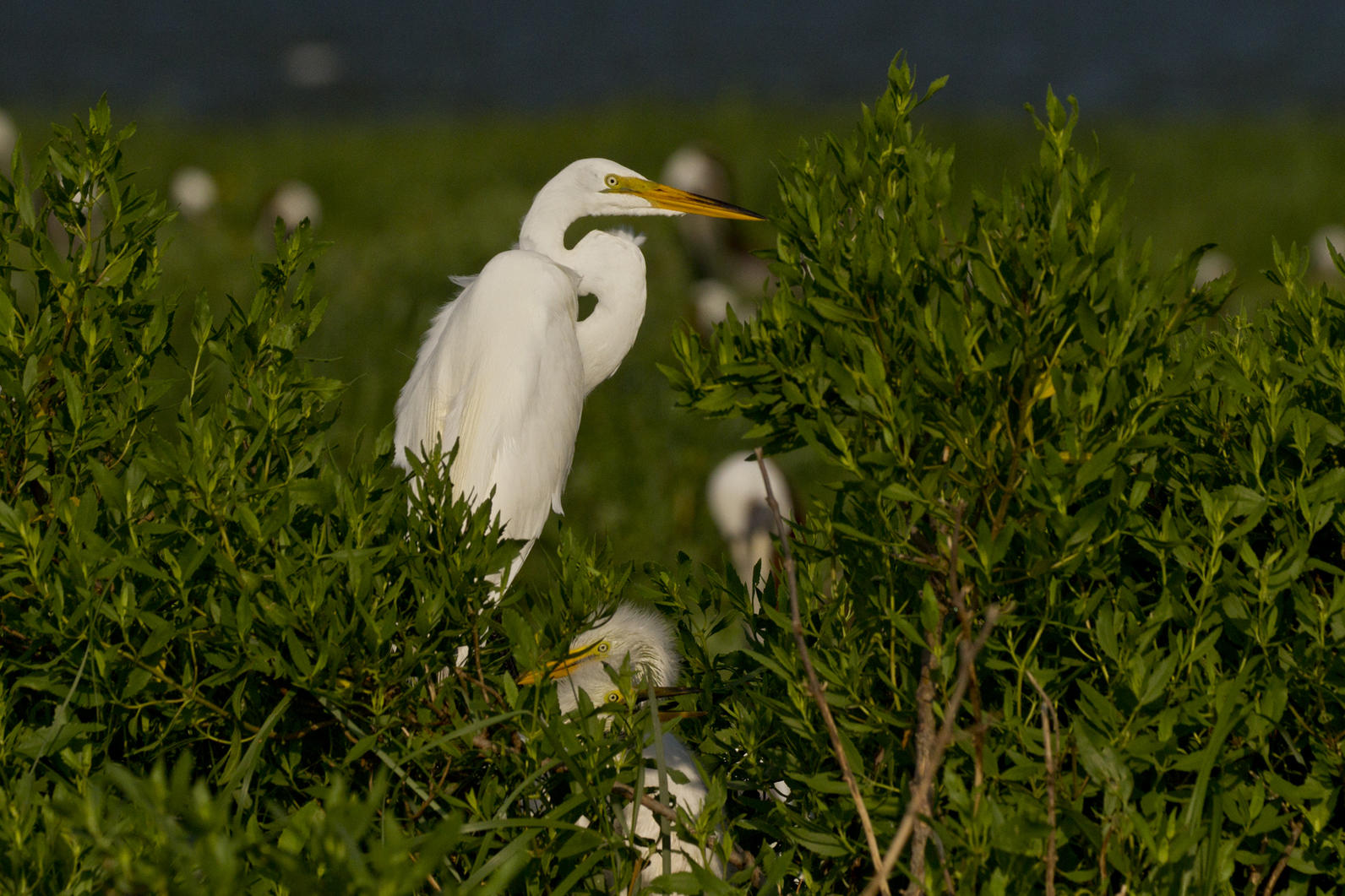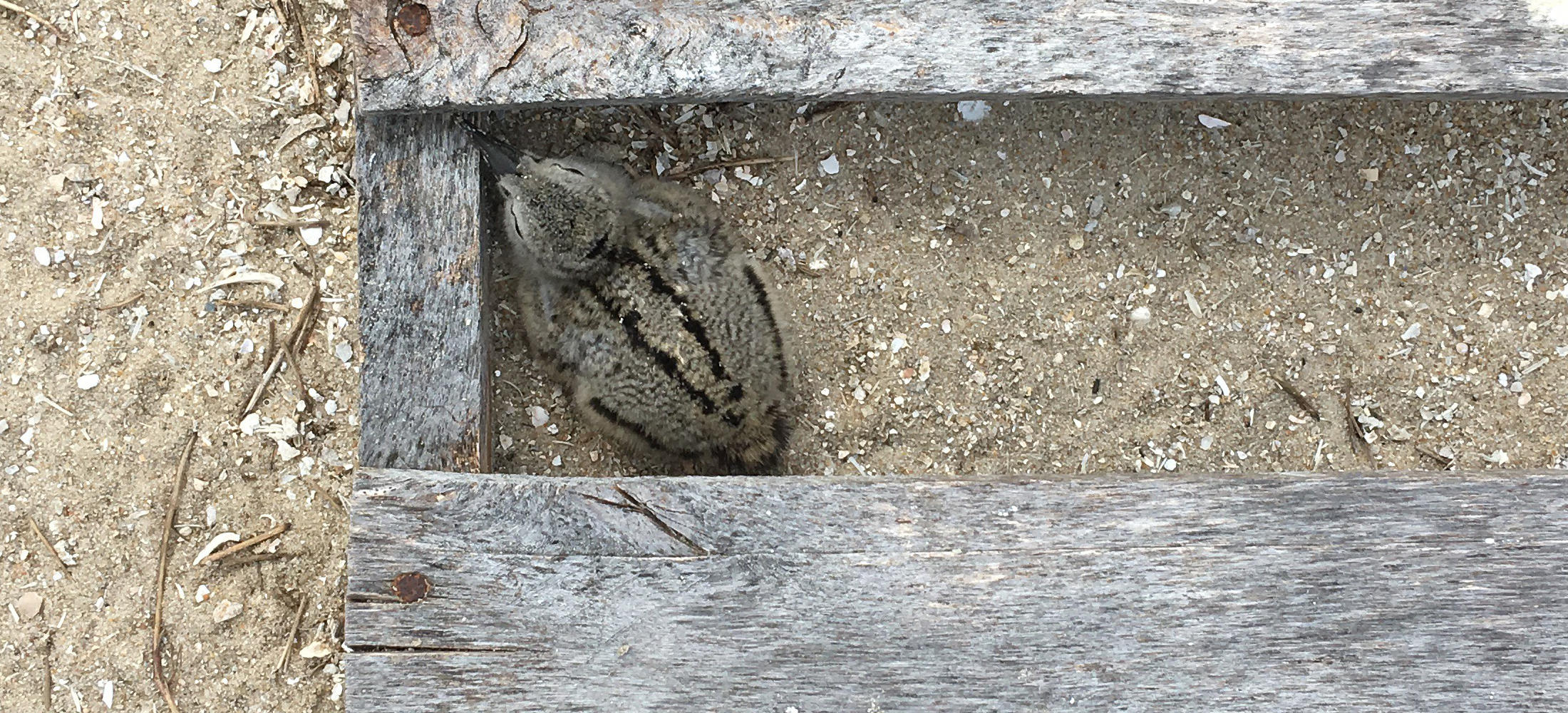Every year, Audubon NC staff works to manage and protect nesting birds around the state in four general areas: the Cape Fear River, barrier islands and inlets in southeast North Carolina, Core Sound, and Ocracoke Inlet.
This year began with a cold spring, but has so far been generally successful thanks to the absence of major storms or human distubance events.
Cape Fear River
Over the past two years, with funding from the National Fish and Wildlife Foundation, Audubon NC has worked with NC Wildlife Resources Commission staff to manage vegetation on two dredged-material islands, Ferry Slip and South Pelican, in the Cape Fear River. These manmade islands are made of sand and can provide nesting sites to Royal and Sandwich Terns, which are habitat specialists that require open, sandy spaces to nest.
However, dredged-material islands will also become overgrown with vegetation if they are not managed properly or do not receive additional deposits of sand. After a period of overgrowth, Ferry Slip Island is once again in good shape for terns, and a small colony of Royal and Sandwich Terns re-colonized the site, along with about 15 pairs of American Oystercatchers and even one very grouchy pair of Canada Geese!
The main tern colony was again on South Pelican Island. The terns’ chicks began fledging in early July and soon they will depart the islands, leaving them quiet in the absence of their raucous calls.

The silence may be welcome to the 15 or so pairs of oystercatchers that also nest on these islands. Both islands’ oystercatchers have done well, since vegetation managemnet also cuts back on the amount of Laughing Gull habitat available. When too numerous, nesting Laughing Gulls crowd out the osytercatchers and prey on their young chicks. Without these bothersome neighbors, over a dozen oystercatcher chicks are on track to fledge from these islands.
Elsewhere on the river, on marshy natural islands, Brown Pelicans, wading birds, and yet more oystercatchers are all doing well. These sites are especially vulnerable to storms and high tides, so the calm season has benefitted them.
There is one notable absence this year, though, from the Cape Fear River: White Ibis, which usally call Battery Island home, did not nest there in large numbers this year. Their chicks had been preyed on by two immature Bald Eagles, and they likely remembered that experience this spring and as a result, went elsewhere. In this case, “elsewhere” appears to be nearby freshwater swamps on the western side of the Cape Fear River.
Lea-Hutaff Island and Wrightsville Beach
Barrier islands are important nesting habitat for terns, skimmers, plovers, and oystercatchers around North Carolina. Audubon NC manages two barrier island sites, Lea-Hutaff Island and the south end of Wrightsville Beach—although it’s heavily developed, it’s still a barrier island.
On Lea-Hutaff an early visit from a coyote seemed to spell disaster for nesting success, but it did not return (they can swim between the island and mainland) and the Least Terns (over 400 pairs), American Oystercatchers, and Wilson’s Plovers (over 20 pairs of each) which are the site’s most abundant nesting species rebounded. All three are fledging chicks.

On the south end of Wrightsville Beach, a dredging and beach renourishment project removed much of the nesting habitat that Black Skimmers, Common Terns, and Least Terns depend on. Therefore, no Least Terns have nested there this year.
However, the Black Skimmers were able to eke out some space—they prefer open, sandy areas and like to nest in association with the raucous terns—and a small colony of Common Terns joined them. Their nesting was delayed this year as a result. While usually skimmers are fledging chicks in early July, this year they were just beginning to hatch their eggs. In addition to habitat loss, crows predated many of their eggs, so Audubon NC staff and the volunteer bird stewards are still watching and waiting to see how the chick-rearing portion of the season goes.
Core Sound and Ocracoke Inlet Islands
In the early spring, staff posted Beacon Island, a natural island smack in the middle of Ocracoke Inlet. It’s been battered by storms and erosion, but a living shoreline project has helped to prevent further loss of land—and it’s a good thing too.
The posting trip found about 50 Brown Pelican nests in the early stages of construction, and a month or so later, Beacon Island was draped from east to west in nesting pelicans. Joining them were Great Egrets, Tricolored Herons, and even a small colony of White Ibis. All appear to have done well, as large chicks are clambering through the vegetation and their older brethern are already flying.

Nextdoor to Beacon lies North Rock Island, a small remnant of what had once been a larger site. But even though it is small, it hosted a delightfully varied colony of wading birds: White and Glossy Ibis; Great and Snowy Egrets; and Tricolored, Little Blue, and Black-crowned Night-Herons all nested there.

Nesting was minimal on the Audubon NC islands in Core Sound. Wainwright, a dredged material island that was re-built last year, had once again receded under the waves. But, Chainshot Island, a little marsh island that may not be much larger than your living room, is supporting a colony of Great Egrets, as it does almost every year. In such a safe and remote location, the elegant waders usually fledge many chicks, which we hope to see on our next visit.
With all these birds at all these sites, staff have been busy monitoring nesting success and maintaining signage; assisting student research projects; working with partners at our sites and theirs to band oystercatchers, terns, and pelicans as well as to collect other data; training volunteer bird stewards; and keeping up with data.
All of this hard work, though, is rewarding because we get to look in on these amazing animals and hope that with good management and protection they will be able to successfully raise their young.







